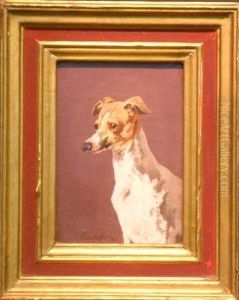James Brownlee Hunter Paintings
James Brownlee Hunter was not a widely recognized artist during his lifetime, and his work has not been extensively documented in the annals of art history. Born in 1877, Hunter was a Scottish painter whose life spanned the late 19th and early 20th centuries, a period of significant change and development in the art world.
Hunter's artistic career developed during a time when European art was witnessing a transformation, with movements such as Impressionism, Post-Impressionism, and the beginnings of Modernism influencing artists' approaches to their work. While there is limited information on Hunter's training and influences, it is known that he was active during a rich period for Scottish art, which included artists like the Glasgow Boys, a group of painters who were creating innovative and distinctive works in the late 19th century.
James Brownlee Hunter's artistic output is not well-documented, but he is believed to have painted landscapes, possibly influenced by the natural beauty of Scotland. His style would have likely been affected by the broader trends of the time, perhaps showing elements of the tonalism and realism that were prevalent among his contemporaries.
Hunter's death in 1937 marked the end of his life, but his work did not gain the recognition that many of his peers achieved. As such, the details of his career and contributions to art remain obscure, with only a modest footprint in the historical record. His paintings, if they have survived, would offer a glimpse into his personal interpretation of the Scottish landscape and the artistic movements of his time. In the absence of a robust body of work or a strong historical presence, James Brownlee Hunter remains a peripheral figure in the study of early 20th-century Scottish art.
